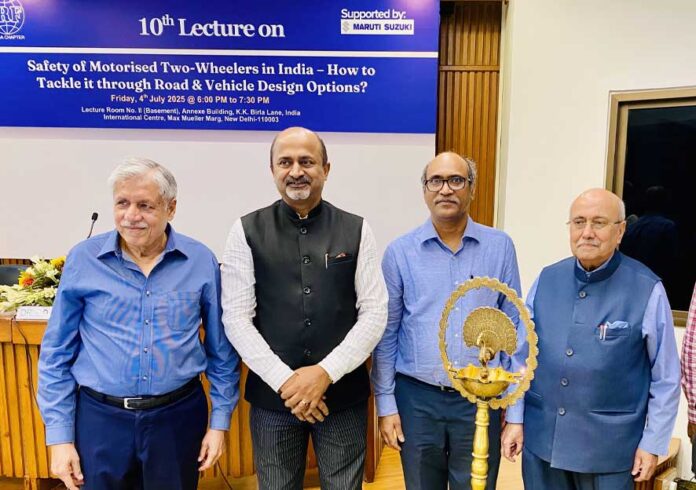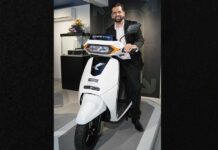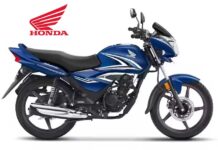
At a recent lecture on “Safety of Motorised Two-Wheelers in India – How to Tackle it through Road & Vehicle Design Options?” organised by the International Road Federation – India Chapter (IRF-IC), leading road safety experts and industry representatives emphasised the urgent need for structural and regulatory changes to protect two-wheeler riders.
Experts called for dedicated lanes for two-wheelers, a comprehensive study to assess the suitability of Anti-lock Braking Systems (ABS) versus Combined Braking Systems (CBS), and stronger enforcement of traffic safety laws.
“Two-wheelers account for 74% of India’s vehicular traffic, yet they are largely overlooked in road infrastructure planning and traffic engineering. The absence of dedicated lanes and proper segregation puts them—and pedestrians—at the highest risk,” said Dr. Rohit Baluja, President of the Institute of Road Traffic Education (IRTE). “What we need is proper lane segregation and strict enforcement, which will significantly enhance rider safety and reduce crashes.”
“In an attempt to push forward the road safety agenda, the transport ministry has made Anti-lock Braking Systems (ABS) mandatory for all new scooters and motorcycles irrespective of engine capacity from January 2026. ABSis only activates on the front wheel of a two wheeler while Combined Braking System (CBS) works on both wheels. India needs to create its own vehicular safety systems instead of copying others“ said Dr Baluja.
Speaking at the event, Mr. Prashant K. Banerjee, Executive Director of the Society of Indian Automobile Manufacturers (SIAM), raised concerns over the blanket implementation of Anti-lock Braking Systems (ABS) for two-wheelers with engine capacities below 125cc.
“SIAM sells nearly two crore two-wheelers annually, and around 60% of these fall under the 125cc category. Mandating ABS for this segment is expected to raise vehicle prices by at least ₹4,000,” he noted. “Moreover, a study from Japan indicates that ABS improves safety by only 1.4% on slippery roads. It is important that a thorough, data-driven study is conducted to determine whether India truly needs ABS or if Combined Braking Systems (CBS) would be more suitable for our road conditions.”
“India records the highest number of road fatalities globally. While modern passenger vehicles now comply with advanced safety norms and come equipped with cutting-edge safety features, there remains a significant gap in holistic enforcement, consumer awareness, and a level playing field,” said Mr. Prashant K. Banerjee, Executive Director, SIAM.
“What’s urgently needed is not just innovation in vehicle safety, but also strict enforcement of traffic laws and widespread education to promote safer mobility across all segments.”
“Two wheelers are the lifeline of major cities in the country despite improvement in public transport and we have to live with them . The only solution is to find ways and means to make them safe with use of technology, strict enforcement, and education . Safe technological systems including ABS brakes for all two wheelers cannot be ignored. Consumers in India with most vehicles having GNCAP and BNCAP assessment ratings have a better choice of safer vehicles. It is a good moment towards the UN objective of road safety by 2030 “ Said Mr K K Kapila, president emeritus, International Road Federation (IRF)
Mr Kapila also stressed on the need mandating airbags for two wheelers and art helmets which do not allow a vehicle to start till worn. He also stressed on the need of developing road infrastructure on the basis of 5E.s of Road safety including Road Engineering, Vehicular Engineering, Education, Enforcement and Emergency care.
Dr. Ch. Ravi Sekhar, Chief Scientist, CSIR – CRRI stressed on the need of the country to have separate dedicated lanes for Two wheelers .









